Herbo-Mineral Medicine, Cardiogrit Gold, Exhibits Protective Effects in Caenorhabditis elegans Model of Doxorubicin-Induced Cardiotoxicity
- PMID: 40761538
- PMCID: PMC12321421
- DOI: 10.1155/jt/4609428
Herbo-Mineral Medicine, Cardiogrit Gold, Exhibits Protective Effects in Caenorhabditis elegans Model of Doxorubicin-Induced Cardiotoxicity
Abstract
Doxorubicin, an effective antineoplastic agent, is often prescribed for the treatment of various carcinomas. However, the use of doxorubicin becomes limited due to its adverse effects like cardiotoxicity, dysmenorrhea, and leucopenia. Cardiogrit Gold (CG) is a herbo-mineral Ayurvedic medicine prescribed for the treatment of various cardiovascular ailments. The current study aimed to investigate the therapeutic potential of CG in imparting protection against doxorubicin-induced cardiotoxicity. Wild-type (N2) and genetically modified Caenorhabditis elegans(SJ4005 and DA597) were used as model organisms to assess the bioactivity of CG against doxorubicin-induced cardiotoxicity. Chemical characterization of CG was performed by HPLC-based analysis. Calcium, a key mineral component of CG, was measured in CG-treated C. elegans using inductively coupled plasma mass spectrometry (ICP-MS) analysis, as the marker of CG internalization in C. elegans. Toxicity induced by doxorubicin and its recovery upon CG treatment was determined by various toxicologically important endpoints. CG treatment rescued N2 C. elegans from doxorubicin-induced reduction in their growth, reproduction, locomotory behavior, pharyngeal pumping, feeding ability, and increased ROS generation. CG treatment modulated the expression of hsp-4 in SJ4005 C. elegans suggestive of decreased ER stress and normalized the pharyngeal grinder damage in DA597 C. elegans, indicating a robust induction of cardio-normalcy. Novel analytical methods were developed to detect and quantify doxorubicin in C. elegans on HPLC and UPLC/QToF-MS platforms. Interestingly, CG treatment decreased bioaccumulation of doxorubicin in C. elegans, robustly correlating with the observed cardioprotective effects. Taken together, CG has a strong cardioprotective profile against doxorubicin-induced damages and could be taken for further preclinical and clinical assessments.
Keywords: Caenorhabditis elegans; Cardiogrit Gold; cardiotoxicity; doxorubicin; pharyngeal pumping.
Copyright © 2025 Acharya Balkrishna et al. Journal of Toxicology published by John Wiley & Sons Ltd.
Conflict of interest statement
The test formulation (Cardiogrit Gold) was sourced from Divya Pharmacy, Haridwar, Uttarakhand, India. Cardiogrit Gold is a marketed medicinal product of Divya Pharmacy, Haridwar, India. Acharya Balkrishna is an honorary trustee in Divya Yog Mandir Trust, which governs Divya Pharmacy, Haridwar. In addition, he holds an honorary managerial position in Patanjali Ayurved Ltd, Haridwar, India. Divya Pharmacy, Haridwar, and Patanjali Ayurved Ltd., Haridwar, manufacture and sell many herbal medicinal products. Other than providing the test formulation (Cardiogrit Gold), Divya Pharmacy was not involved in any aspect of the research reported in this study. All other authors declare no conflicts of interest.
Figures

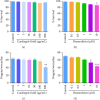
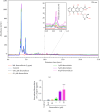

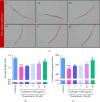

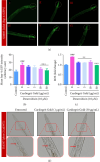
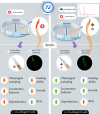
Similar articles
-
Management of urinary stones by experts in stone disease (ESD 2025).Arch Ital Urol Androl. 2025 Jun 30;97(2):14085. doi: 10.4081/aiua.2025.14085. Epub 2025 Jun 30. Arch Ital Urol Androl. 2025. PMID: 40583613 Review.
-
Topotecan, pegylated liposomal doxorubicin hydrochloride and paclitaxel for second-line or subsequent treatment of advanced ovarian cancer: a systematic review and economic evaluation.Health Technol Assess. 2006 Mar;10(9):1-132. iii-iv. doi: 10.3310/hta10090. Health Technol Assess. 2006. PMID: 16545208
-
[Volume and health outcomes: evidence from systematic reviews and from evaluation of Italian hospital data].Epidemiol Prev. 2013 Mar-Jun;37(2-3 Suppl 2):1-100. Epidemiol Prev. 2013. PMID: 23851286 Italian.
-
Statins: Novel Approaches for the Management of Doxorubicin-Induced Cardiotoxicity-A Literature Review.Cardiovasc Toxicol. 2025 Sep;25(9):1429-1452. doi: 10.1007/s12012-025-10030-6. Epub 2025 Jul 10. Cardiovasc Toxicol. 2025. PMID: 40637833 Review.
-
A rapid and systematic review of the clinical effectiveness and cost-effectiveness of topotecan for ovarian cancer.Health Technol Assess. 2001;5(28):1-110. doi: 10.3310/hta5280. Health Technol Assess. 2001. PMID: 11701100
References
-
- Chhikara B. S., Parang K. Global Cancer Statistics 2022: The Trends Projection Analysis. Chemical Biology Letters . 2023;10(1):p. 451.
-
- Abdul-Rahman T., Dunham A., Huang H., et al. Chemotherapy Induced Cardiotoxicity: A State of the Art Review on General Mechanisms, Prevention, Treatment and Recent Advances in Novel Therapeutics. Current Problems in Cardiology . 2023;48(4):p. 101591. - PubMed
-
- Appel E. Side Effects of Chemotherapy and Their Management. Microreviews in Cell and Molecular biology . 2023;4
LinkOut - more resources
Full Text Sources

